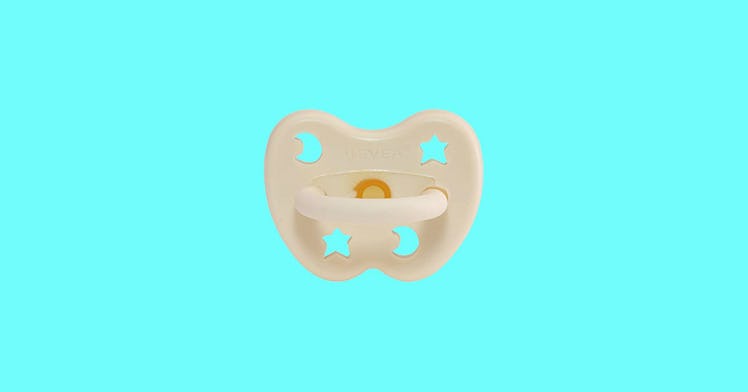The Best Baby Pacifiers to Help Infants Learn to Self-Soothe
These suck, in the best way possible.

The best pacifiers can be sanity savers for parents, helping babies learn to self-soothe and fall asleep faster. But the decision on whether or not to give your baby a pacifier is often hotly debated (sometimes even within the same family). But we’re assuming if you’re reading this, you’ve landed on Team Paci, which by the way, isn’t a bad place to be (some experts think they may even decrease SIDS risk).
But it’s important to know how and when to introduce a pacifier — and how to choose the best, safest pacifiers for children of different ages. To prevent a baby from getting the whole pacifier into her mouth, choose a style that has at least an inch and a half of space between the nipple and the ring. You should also follow the manufacturer’s guidelines for the age range, since an older toddler could choke on a smaller paci meant for a newborn.
As for those ever-popular teething necklaces, many of which attach to pacifiers, the American Academy of Pediatrics says to avoid those worn by children at all costs because of the risk of strangulation and choking. Suffocation is the leading cause of death for children under the age of one and among the top five causes of death for children between the ages of 1-4, says the organization.
Baby Pacifier Tips From the American Academy of Pediatrics
- Look for pacifiers that can’t break into multiple pieces, such as those made from a single piece of plastic.
- The shield between the nipple and the ring should be at least 1-1⁄2 inches (3.8 cm) across, so the infant cannot take the entire pacifier into her mouth. And those holes in the shield? They’re for ventilation—make sure yours has them.
- Don’t tie a pacifier to anything (the baby’s body, the crib, etc), since cords present a risk of strangulation.
- Check your pacifiers regularly for wear and tear, especially as your child develops teeth.
You may need to experiment with a few different nipple types before finding the right match: Some babies prefer a rounded shape, others like more flattened (these are sometimes called “orthodontic”), and then there are the delightfully chill babies who will take a few different ones.
Here’s a round-up of some of the best BPA-free pacifiers, but keep in mind that babies can be particular creatures.
The Best Pacifiers for Newborn Babies
The Best Pacifiers for Older Babies
The Best Pacifier for Toddlers
Every product on Fatherly is independently selected by our editors, writers, and experts. If you click a link on our site and buy something, we may earn an affiliate commission.